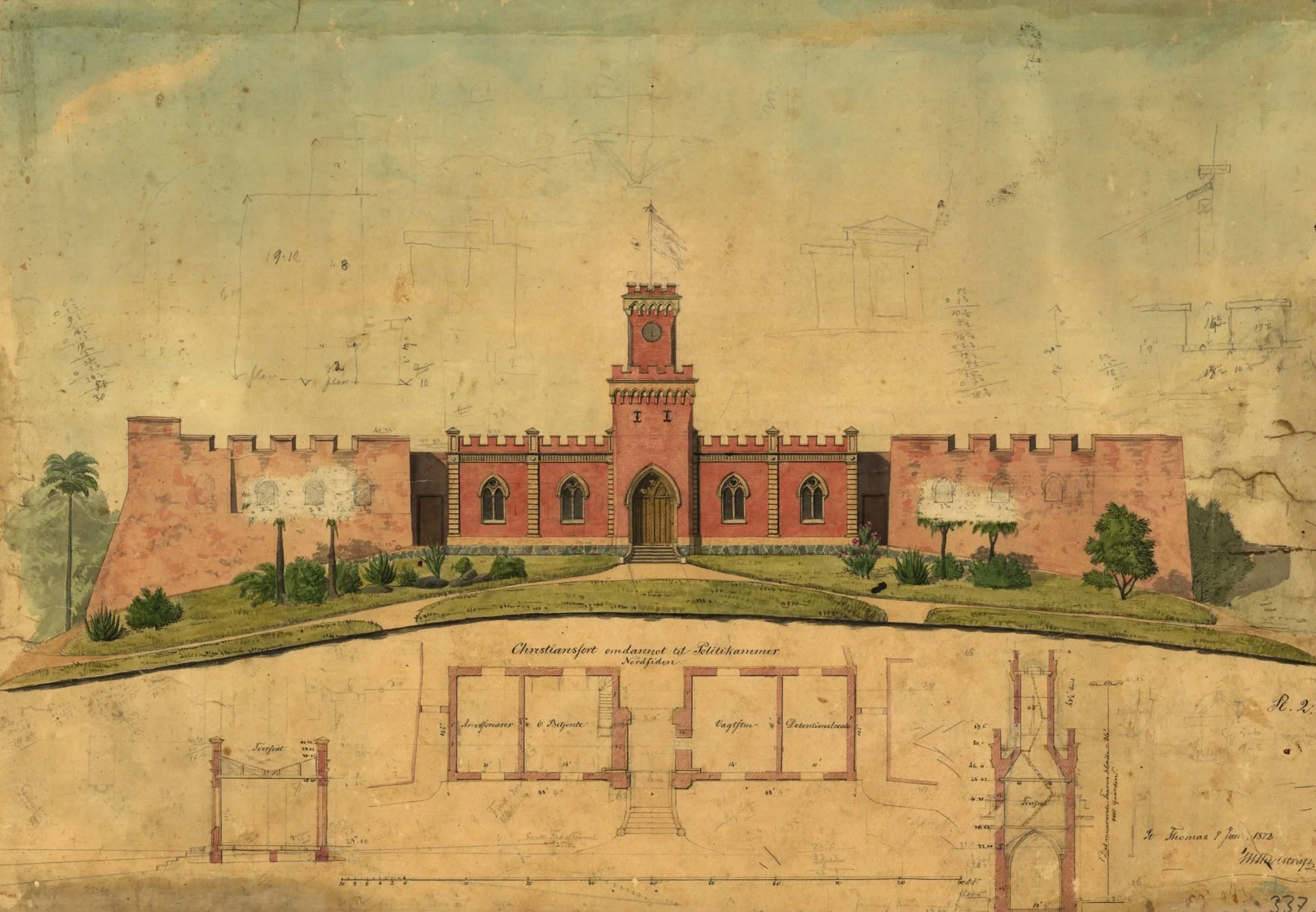
Fort Christian
Fort Christian in Charlotte Amalie, named for Christian V of Denmark, was built between 1672 and 1678 and is the first and largest fort in the Virgin Islands. Constructed on a rocky peninsula in the bay, its tall, thick walls of stone and brick, supported by large buttresses, stand as a testament to early colonial engineering. Timber, bricks, and other materials were imported, while lime for mortar was likely produced locally.
The fort was established under the leadership of Jørgen Iversen Dyppel, who oversaw construction, colonial administration, and labor, which included indentured European workers and enslaved Africans. The central building, Trygborg (“safe castle”), housed the governor, staff, and essential functions, while the star-shaped bastions and surrounding palisades provided defense against pirates and foreign attacks.
By 1680, Fort Christian was fully operational, with chapels, kitchens, guardrooms, offices, and storage spaces forming a self-contained colonial community. The fort, along with watchtowers and outposts around the harbor, formed the core of Charlotte Amalie’s early fortifications, ensuring the safety of the settlement and shaping the island’s colonial history.
